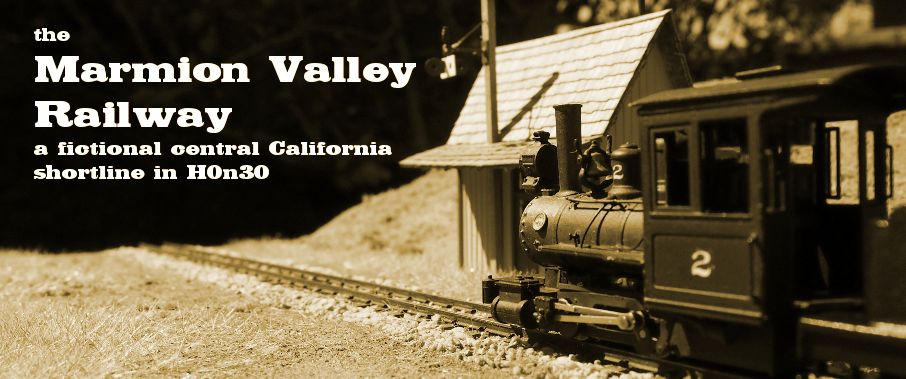The above was a cryptic adage taught to me early on in my music career by one of my first mentors. As I hastily crammed extra measures onto an instrumental part in an effort to save paper, he slung those words at me in an effort to remind me that using more paper and putting the extra effort into preparing the parts well would be a cheaper investment than running the clock out in the studio as the musicians struggled to read the tightly formatted music.
What does this have to do with model railroading?
The adage occurred to me as I created a few cardstock mockups for the MVRR. Paper is cheap, cheaper than styrene, basswood, and Grandt Line castings. What better way to test out the composition and arrangement of structures in a scene than creating some mocked-up buildings as stand ins?
There is a dangerous mentality in this hobby; that is, the idea that if we aren't actually building models or running trains, we are not actually "accomplishing anything." I fall into this trap a lot. I feel rushed to jump into the next project in the race to get the layout finished. I feel like if I don't spen money on materials or kits, I can't do anything productive or enjoyable.
On the contrary, we should relax, take our time, and think about the important decisions with patience and clarity. We can use materials on hand to help accomplish these tasks.
One of the things I want to get better at is composing a scene. When faced with the relatively shallow dimensions of this little layout, it calls for some extra planning to create a believable scene. Before I commit to scratchbuilding structures, I want to see how all the elements will work together in the scene, and how the topography will help contribute to the overall composition of sight lines, sub-scenes, etc.
We start with our little depot, which is almost finished, but has a paper stand-in as I test out the position and placement of the platform. This is the alignment I like best, though it does have the drawback of crossing over the joint in the modules. I'm trying to avoid having elements overlap the joint. One idea would be to eliminate the longer tail of the platform all together.
I intend for the platform to cross over the tracks, to allow scale passengers to cross between them.
Here is a good example of a "pondering spot", as I haven't really decided what kind of industry will occupy this spur. I haven't even tacked down the spur yet. Right now, the mockup is holding place as a generic freight warehouse of some type. It's also conceivable that a second industry could occupy the south side of the spur, since this track can hold two car spots.
Here is an area where I want to introduce some "verticality" to the layout of the buildings. Imagine the road (center bottom of photo) crosses the tracks, then splits in a "T"; the right turn heads to the depot and the freight house, while the left road crosses in front of the hotel and cafe, climbing gently up the hillside until it crosses over the railroad tracks on a timber bridge or stone viaduct.
The hotel and cafe would be "built into a hillside," so to speak, as the topography gently rises towards the left side of the photo. This gives the right-of-way a convenient "exit point" under the overpass, since I intend the rear track to be hidden behind the ridge/treeline at the back of the layout.
I could also see the cafe and hotel swapping places, which would accentuate the rise of the hill; however, in its current place, the hotel serves as an added viewblock on the lower-level topography. Both buildings are of the "false front" variety, with either board-and-batten or clapboard siding.
Making these mockups was simple with a scale ruler, pencil, a sharp xacto and some cardstock I had on hand. It's an enjoyable and quick way to start composing the idea scene.



















